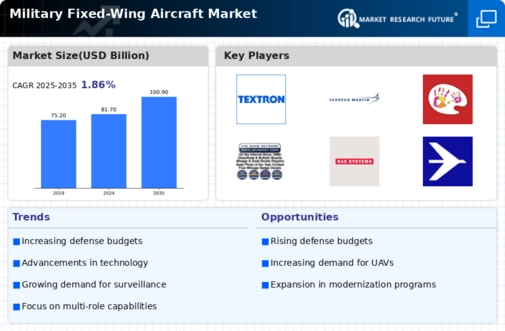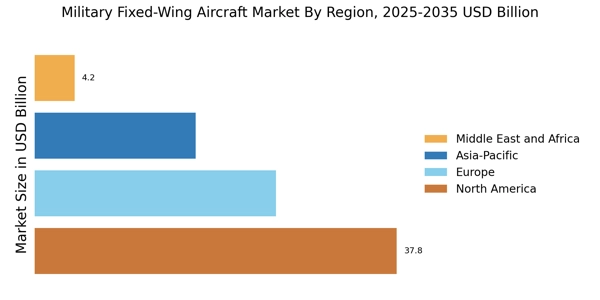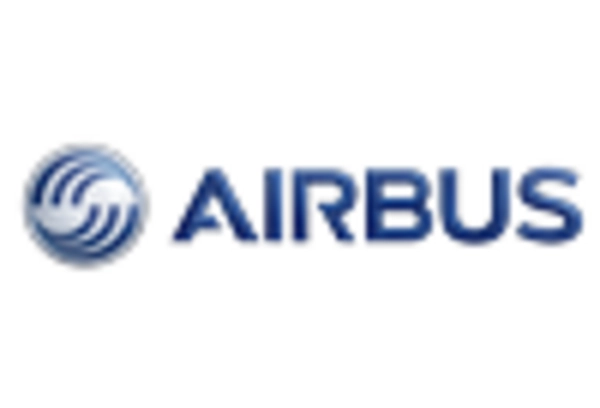The Military Fixed-Wing Aircraft Market is currently characterized by a dynamic competitive landscape, driven by technological advancements, geopolitical tensions, and increasing defense budgets across various nations. Key players such as Lockheed Martin (US), Boeing (US), and Northrop Grumman (US) are at the forefront, each adopting distinct strategies to enhance their market positioning. Lockheed Martin (US) emphasizes innovation in stealth technology and advanced avionics, while Boeing (US) focuses on expanding its global footprint through strategic partnerships and collaborations. Northrop Grumman (US) is increasingly investing in unmanned systems, indicating a shift towards integrating advanced technologies into traditional platforms. Collectively, these strategies contribute to a competitive environment that is both concentrated and evolving, as companies vie for dominance in a market that is becoming increasingly reliant on cutting-edge technology.
In terms of business tactics, companies are localizing manufacturing to reduce costs and enhance supply chain resilience. This approach is particularly evident in regions with burgeoning defense sectors, where local partnerships are becoming essential. The market structure appears moderately fragmented, with several players holding significant shares, yet the influence of major corporations remains pronounced. The collective actions of these key players shape the market dynamics, as they engage in strategic maneuvers to capture emerging opportunities.
In August 2025, Lockheed Martin (US) announced a partnership with a leading technology firm to develop next-generation avionics systems for its fighter jets. This collaboration is poised to enhance the operational capabilities of their aircraft, aligning with the increasing demand for advanced technological integration in military operations. The strategic importance of this partnership lies in its potential to solidify Lockheed Martin's position as a leader in innovation, particularly in an era where technological superiority is paramount.
In September 2025, Boeing (US) revealed plans to expand its production facilities in Australia, aiming to localize the manufacturing of military aircraft components. This move not only supports regional economic growth but also enhances Boeing's ability to respond swiftly to local defense needs. The strategic significance of this expansion is multifaceted; it allows for greater supply chain efficiency and strengthens Boeing's competitive edge in the Asia-Pacific market, which is witnessing increased defense spending.
In July 2025, Northrop Grumman (US) secured a contract with the U.S. Air Force to develop advanced unmanned aerial systems. This contract underscores the growing trend towards automation and unmanned capabilities in military aviation. The strategic implications of this development are profound, as it positions Northrop Grumman at the forefront of a market shift towards unmanned systems, potentially redefining operational paradigms in military engagements.
As of October 2025, the Military Fixed-Wing Aircraft Market is increasingly influenced by trends such as digitalization, sustainability, and the integration of artificial intelligence. Strategic alliances are becoming more prevalent, as companies recognize the need for collaboration to drive innovation and enhance operational efficiencies. Looking ahead, competitive differentiation is likely to evolve, with a pronounced shift from price-based competition to a focus on technological innovation, reliability in supply chains, and the ability to adapt to rapidly changing defense requirements.


















Leave a Comment